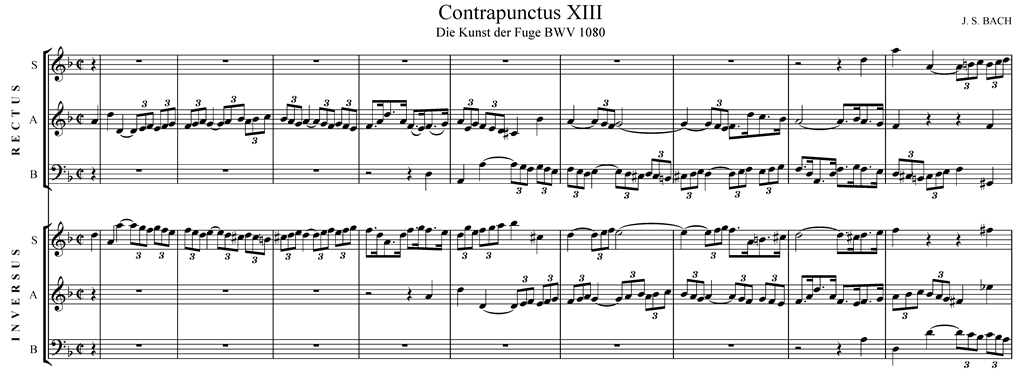Contrapunctus XIII from the Art of the Fugue
José Rodríguez Alvira
Contrapunctus XIII is the second of the two mirrors fugue in the Art of Fugue (Die Kunst der fuge BWV 1080) by J. S. Bach. In these fugues, the version called rectus is transformed using mirror inversion or contrary motion to create a second fugue called inversus. Here are the first measures of both fugues. The inversus looks like a reflection in a mirror of the rectus:

The voices of the rectus and inversus interchange as follows:
| Alto to soprano | Bass to alto | Soprano to bass | |
|---|---|---|---|
| R e c t u s |
 |
||
 |
|||
 |
|||
 |
 |
 |
|
| I n v e r s u s |
 |
||
 |
|||
 |
The Subject
Here are the subjects on which the rectus and inversus versions are based. The notes in red, correspond to the subject of the Art of the Fugue in its original and inverted forms.
Subject from the rectus, presented by the alto. Based in the inverted subject from the Art of the Fugue:

NOTE: The small triangles are used to identify the ascending and descending versions of the subjects.
Inverted subject from the Art of the Fugue:

Subject for the inversus, presented by the soprano. Based on the original subject:

Original subject from Art of the Fugue:

Subjects and answers alternate between ascending and descending versions. Here are the subject and answers presented in the exposition by the 3 voices in the rectus.
Subject (alto):

Answer (bass):

Second answer (soprano):

NOTE: we prefer to call the third voice second answer since it looks like a tonal answer to the subject.
The inversus inverts each of the subject and answers.
Subject (soprano):

Answer (alto):

Second answer (bass):
